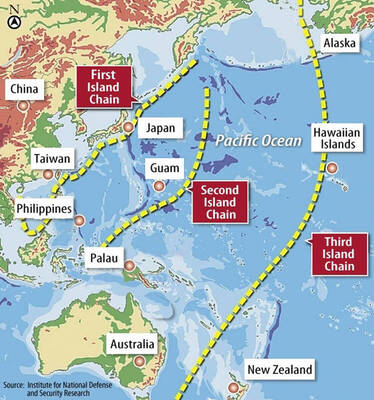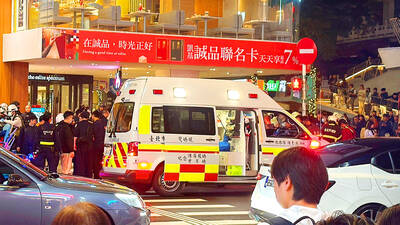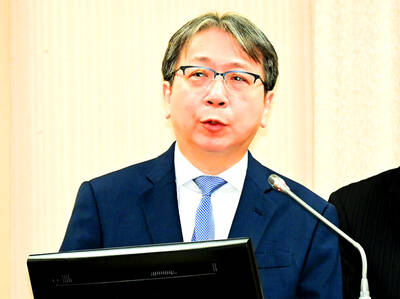During Japan's "lost decade" of economic decline, Osaka was a leader in homelessness, unemployment, bag snatching and groping on trains. Now the port city is pinning its hopes on a 39cm-tall humanoid with an eye on the goal of achieving a more worthy reputation -- that of robot capital of the world.
Weighing in at just 2.4kg, VisiON is the product of Team Osaka, which consists of researchers at Osaka University, two robot firms and an aircraft parts manufacturer.
They built the robot from scratch in only six months with the help of a 15m yen subsidy from the city's government. The investment quickly paid off. VisiON, which uses an omni-directional sensor to give it instantaneous 360-degree visibility, won the humanoid category at last year's Robot World Cup football finals in Lisbon.
It can, without human help, assess the location of the ball, judge how far away it is and then give it a good thump with either foot. "That's easy for humans to do," says Shu Ishiguro, one of the brains behind Japan's Robo Cup-winning team. "But for a robot it is very difficult. The technology is very sophisticated."
VisiON's creators say his skills will be honed before the next tournament, in July in Osaka, when he will be up against robots from 35 countries. Their aim is to put together a team of robots capable of beating the human world football champions by 2050. For now, though, VisiON and other second-generation robots are an integral part of Osaka's efforts to rescue a local economy whose traditional industries and businesses are struggling to find their post-recession feet.
"The Kansai (Osaka, Kyoto and Kobe) economy was stagnant so we needed to come up with a theme that would include as many people as possible," said Shuichi Takano, an official in the Osaka city government's robot design industry section.
"The presidents of the firms I spoke to were pessimistic about their chances, but when I mentioned robots, their eyes lit up.
"Some people say there's no market for second-generation robots, but whereas existing industrial robots are used in situations and places out of bounds for humans, our robots can co-exist with humans.
That's where the potential lies."
Japan has emerged as a leading maker of "next-generation" robots, or those that can act independently to perform complex tasks in such areas as medicine, personal security, welfare and lifestyle.
They include the familiar mass-market "pets" such as Sony's Aibo biped and Hitachi's humanoid rival, Asimo.
Elsewhere the Hospi robot delivers X-ray charts and performs other hospital duties, while Banryu enables homeowners to check their property via remote control while they are out, using real-time video. Wakamaru, Mitsubishi Heavy Industry's house-sitter robot, can surf the internet and call emergency services.
Jaxa, Japan's space agency, plans to have robots exploring the surface of the moon within 20 years. Closer to home, the robot maker ZMP will soon start selling Nuvo, a humanoid home-security robot that takes digital photos and sends them directly to its owner's mobile phone.
Ishiguro believes that it will not be long before robots are preparing and invigilating exams and, in echoes of Knight Rider, taking part in real-time discussions with motorists.
Businesses with a stake in robot technology have reason to feel emboldened. According to the Japan Robot Association, the domestic market for next-generation robots was worth around US$55 million in 2002 but is expected to grow to about US$7.7 billion by 2010.
The trade and industry ministry stepped in to help last year, providing ?4.3bn in subsidies to develop next generation robots, some of which, such as Ligurio, a security robot that can recognise a stranger 50m away, can be seen at the world exposition near Nagoya in central Japan.
Osaka spent ?150 million on robot development in 2004, two-thirds of which went on opening a laboratory in central Osaka at the end of last year. Now occupying a floor high above the busy Umeda district, the lab will form a major part of a 24-hectare plot of land north of Osaka's main railway station that will be developed over the next few years.
Local officials hope that Robo City will be a place where robot developers worldwide can take their ideas, however crazy, knowing that they will be given a fair hearing and, perhaps, see their brainstorms turned into hardware. "In a few years, Osaka will be the Silicon Valley of the robot industry," Ishiguro said.
But before that can happen, Osaka's robot industry says it needs more help in the face of increasing competition from other parts of Japan, South Korea, the US and Europe.
Only about 150 of the 20,000 or so small and medium-sized firms in Kansai are involved in robot development, and cooperation is being hindered by a lack of uniform standards for parts and software. And for an industry whose survival depends on fresh ideas, some old attitudes are proving hard to ditch.
Although a fully domesticated robot is about 40 years away, Ishiguro said: "It will be only several years before you can have a system that can call you on your mobile and ask you what time you'll be home, what you want for dinner, whether you want a bath. It'll be just like having a wife."

The US government has signed defense cooperation agreements with Japan and the Philippines to boost the deterrence capabilities of countries in the first island chain, a report by the National Security Bureau (NSB) showed. The main countries on the first island chain include the two nations and Taiwan. The bureau is to present the report at a meeting of the legislature’s Foreign Affairs and National Defense Committee tomorrow. The US military has deployed Typhon missile systems to Japan’s Yamaguchi Prefecture and Zambales province in the Philippines during their joint military exercises. It has also installed NMESIS anti-ship systems in Japan’s Okinawa

‘WIN-WIN’: The Philippines, and central and eastern European countries are important potential drone cooperation partners, Minister of Foreign Affairs Lin Chia-lung said Minister of Foreign Affairs Lin Chia-lung (林佳龍) in an interview published yesterday confirmed that there are joint ventures between Taiwan and Poland in the drone industry. Lin made the remark in an exclusive interview with the Chinese-language Liberty Times (the Taipei Times’ sister paper). The government-backed Taiwan Excellence Drone International Business Opportunities Alliance and the Polish Chamber of Unmanned Systems on Wednesday last week signed a memorandum of understanding in Poland to develop a “non-China” supply chain for drones and work together on key technologies. Asked if Taiwan prioritized Poland among central and eastern European countries in drone collaboration, Lin

TRAGEDY STRIKES TAIPEI: The suspect died after falling off a building after he threw smoke grenades into Taipei Main Station and went on a killing spree in Zhongshan A 27-year-old suspect allegedly threw smoke grenades in Taipei Main Station and then proceeded to Zhongshan MRT Station in a random killing spree that resulted in the death of the suspect and two other civilians, and seven injured, including one in critical condition, as of press time last night. The suspect, identified as a man surnamed Chang Wen (張文), allegedly began the attack at Taipei Main Station, the Taipei Fire Department said, adding that it received a report at 5:24pm that smoke grenades had been thrown in the station. One man in his 50s was rushed to hospital after a cardiac arrest

ON ALERT: Taiwan’s partners would issue warnings if China attempted to use Interpol to target Taiwanese, and the global body has mechanisms to prevent it, an official said China has stationed two to four people specializing in Taiwan affairs at its embassies in several democratic countries to monitor and harass Taiwanese, actions that the host nations would not tolerate, National Security Bureau (NSB) Director-General Tsai Ming-yen (蔡明彥) said yesterday. Tsai made the comments at a meeting of the legislature’s Foreign Affairs and National Defense Committee, which asked him and Minister of National Defense Wellington Koo (顧立雄) to report on potential conflicts in the Taiwan Strait and military preparedness. Democratic Progressive Party (DPP) Legislator Michelle Lin (林楚茵) expressed concern that Beijing has posted personnel from China’s Taiwan Affairs Office to its